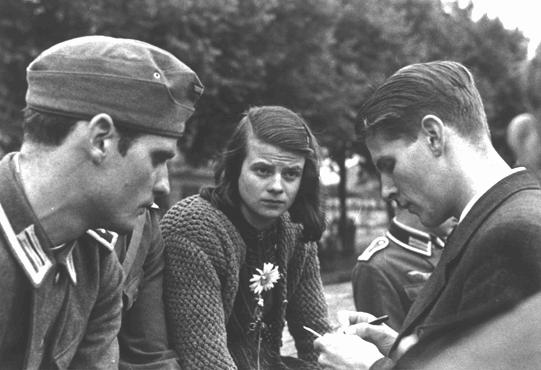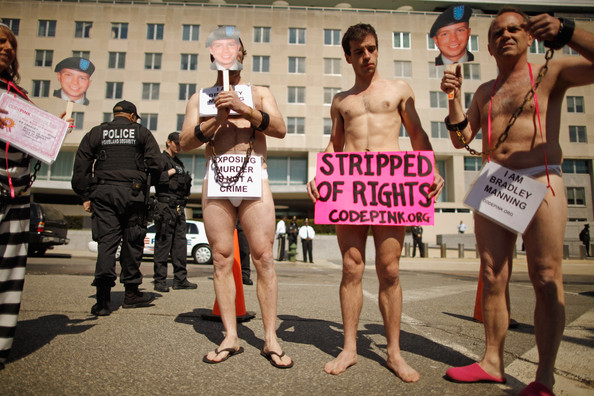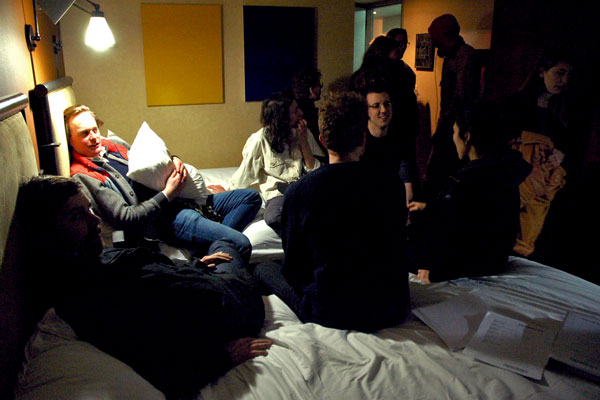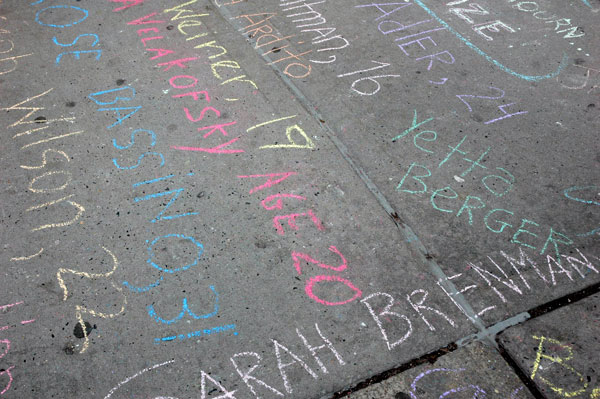
Don't let the Republican barons bring back their "good old days."
I was downtown on Friday afternoon at the corner of Greene Street and Washington Place, at 4:45, the exact moment one hundred years earlier when a fire began inside one of the three floors occupied by the Triangle Waist Company. In 1911, less than an hour after the fire began, 146 garment workers were dead, most of them young women and girls (the youngest were 14), either from the fire itself or because they had jumped a hundred feet and more to their deaths. The factory owners had locked the exits on each of three floors, to ensure that their hundreds of pawns (600 female workers, and about 100 male) could not leave their work stations, in violation of even the rudimentary safety statutes in effect before the horrific disaster which changed everything. Well, not everything, and not quite overnight.
Also, appallingly, today we see increasingly bold attacks on unions and governmental regulatory authority of any kind, which, if successful, would straitjacket all working people, even Republicans not yet become rich: The party is maneuvering to roll back everything which was won by organized labor in the years after 1911, including both safety and living wage rules.
The Republicans want to be able to lock the exit doors, just like they used to.
The Triangle Waist Company factory fire should be remembered as a tragedy dividing an age of capitalist barbarism from an age of enlightened, direct government interest in the welfare of the governed. Instead today there are ominous signs that it may be remembered as only one more horror inspiring only a temporary improvement in the condition of the powerless.

On the 100th anniversary of the tragic - and criminal - fire which engulfed the top three floors of the building which once housed the Triangle Waist Company factory, an installation on the eighth floor, visible from the street below, suggested both funerary bunting and the parachuting skirts of young women jumping to their deaths.

One man, a member of the Socialist Party USA, waved a brave red flag, telling everyone in hearing, "We were there!" He's right.
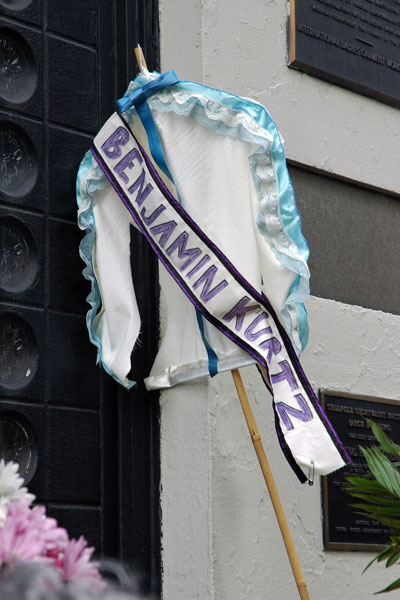
Benjamin Kurtz, 19, was one of the few male victims of the fire, represented here by one of the shirtwaist replicas which was carried to the site in a procession earlier.
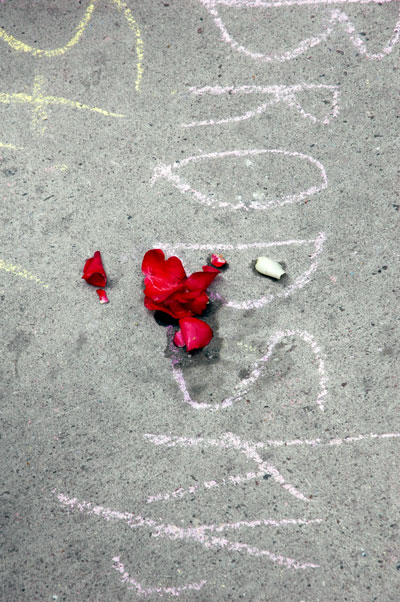
On Friday, one woman in the crowd explained that the most common name among the dead was "Rosie." She carried a large bowl of rose water and rose petals into which people were invited to dip their hands and caress the side of the building or the pavement.
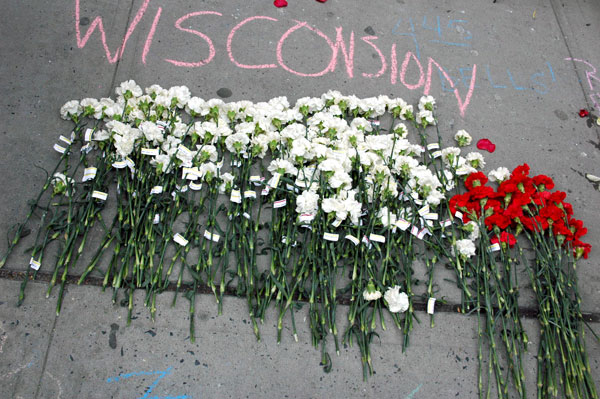
The names of those who had perished had been written in oddly-festive, parti-colored chalk onto the sidewalk, and here the name "Wisconcion" alluded to the unravelling of both hard-fought workers' rights and industry regulations currently underway in Wisconsin and elsewhere in the U.S. Even in New York today, the sweatshop itself survives.
While I was standing about and photographing the group and the visual props gathered on this historic corner, I noticed in the near distance a woman dressed all in black, of brave proportion and stately manner, perfectly-costumed in the manner of a hundred years back. She carried an old-fashioned sign, and moved slowly on the edge of and eventually right through the crowd. At first it seemed that no one else had noticed her, but eventually it was clear she just couldn't be ignored.
I felt a cold shiver and my knees weakened when I first spied her, and I thought about her heroic models and at least a century of noble antecedents. Did she represent one of the founders of the International Ladies Garment Workers Union (ILGWU) or local 25* specifically, to which the Triangle workers belonged? Since she seemed very well dressed, perhaps she was a patron, like Mary Dreier, Alva Vanderbilt Belmont, Anne Morgan (J. P. Morgan's daughter), or any of a number of wealthy and influential women who worked to share their privilege with their sisters.
As I was leaving, I heard the sad phantom speak to the crowd for the first time: She began by asking, "Are any of you members of a union?"
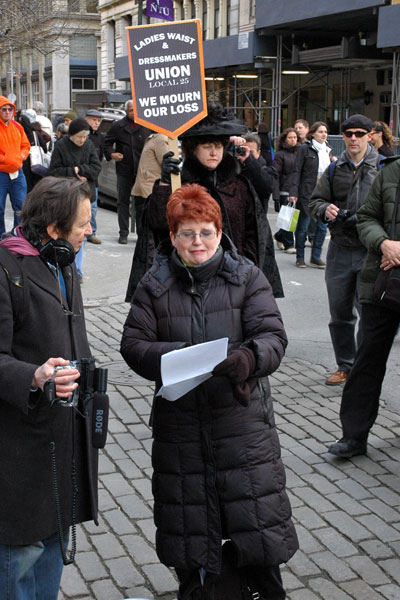

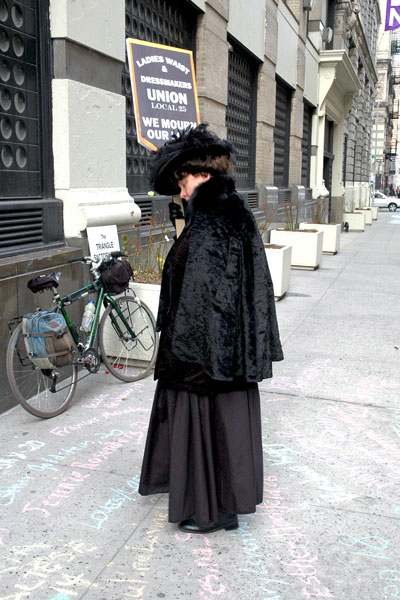
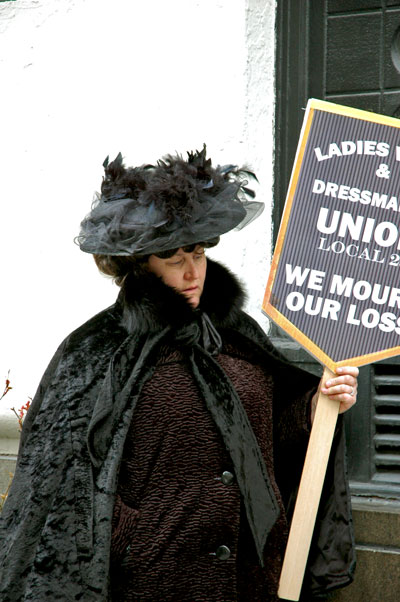
The figure I'll call our conscience seemed to appear out of nowhere, perhaps with a warning: The robber barons are back.
*
The New York State Archives has this to say about Local 25:
Local 25 [of the ILGWU] was known for its militant members. These members led the famous 1909 Uprising of 20,000 in which workers walked out of the Triangle Shirtwaist Factory. The uprising eventually sparked a widespread walkout among shirtwaist workers throughout the city. Many shops met the union's demands while others including the Triangle Shirtwaist Factory did not. Strengthened by a post-strike spike in membership, the workers remained active. The tragic Triangle Shirtwaist Factory fire of 1911 further spurred the union's growth, finally establishing the local's position in the New York garment industry.
In its account the archive addresses the particularly-energetic radicalism of Local 25. There were communist sympathizers in all ILGWU locals, but the more conservative union leaders, regarding 25 as the hotbed, decided to divide its workers into two new locals. It didn't quite work, but eventually, reflecting the history of the American labor movement generally, the union was able to keep genuine leftists out of it leadership entirely.

